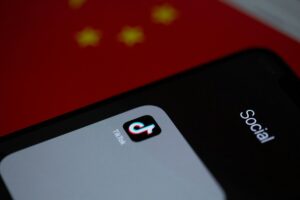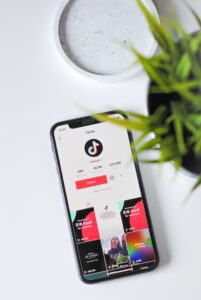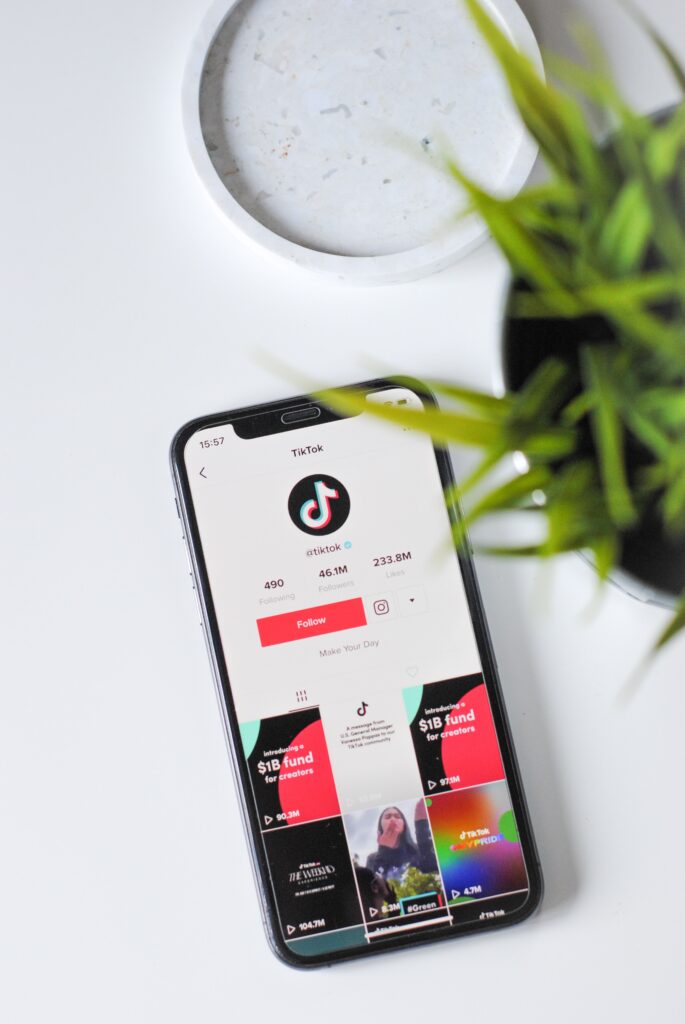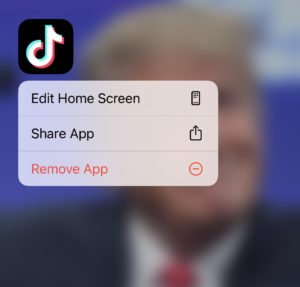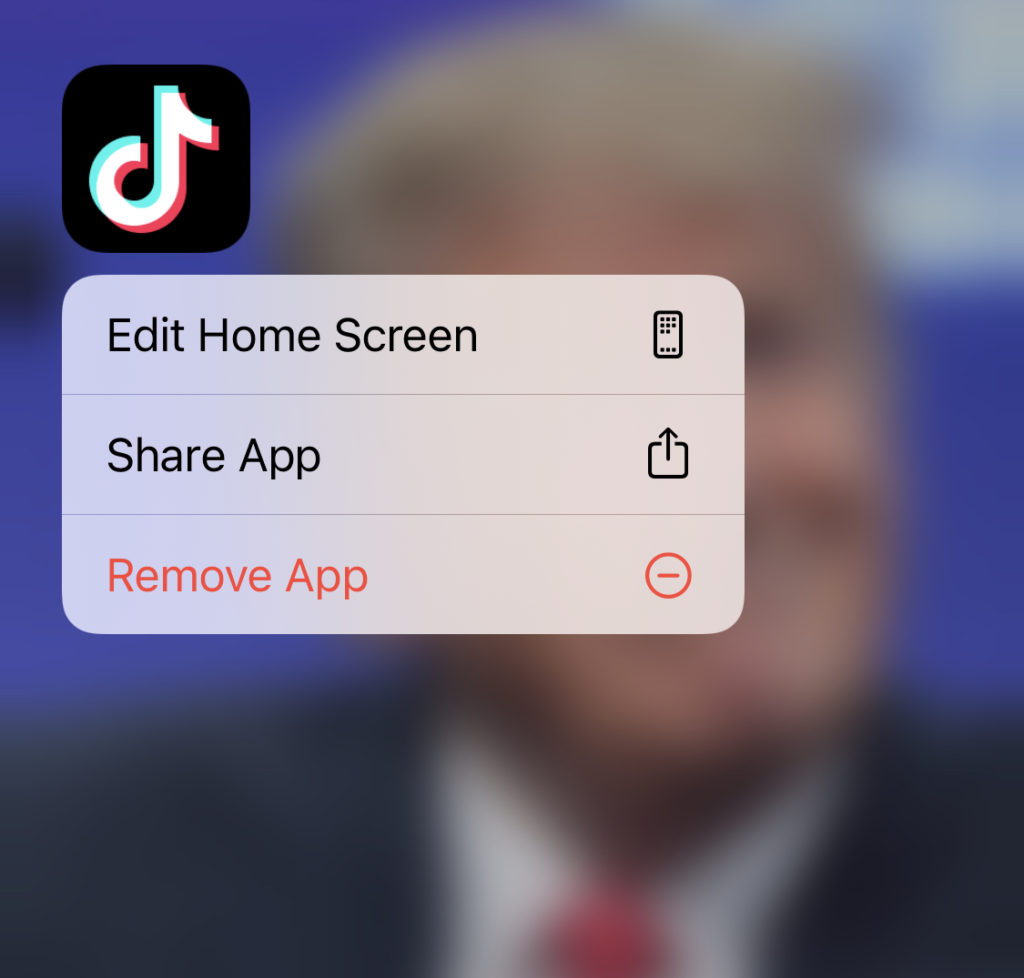By Madison Cone
After six years of wild popularity and influence, TikTok’s time in the limelight may be coming to an end as the prominent app faces a potential ban in the United States.[1] In 2018, the video-sharing platform began its rapid rise to fame as a new and improved version of the formerly popular Music.ly app.[2] By 2020, TikTok surpassed social media giants like Instagram and Facebook and became the most downloaded app of the year.[3] In large part, this was due to its unique ability to connect people, share information, and provide comedic relief during a historic health crisis.[4] Now, the fate of the platform is uncertain after the U.S. House of Representatives voted to approve a bill that requires ByteDance Ltd., TikTok’s parent company, to divest the app within six months or be banned from all U.S. devices.[5]
The primary justification for the proposed legislation is that TikTok’s prevalence in the United States poses a substantial risk to national security.[6] While anticipating and providing protection against potential national security threats is an essential government function, so is upholding Americans’ constitutional right to free speech. The tension between these two objectives has led to considerable debate among politicians, industry experts, and the general public.[7]
A. The Protecting Americans from Foreign Adversary Controlled Applications Act
At least some of the public panic surrounding the Protecting Americans from Foreign Adversary Controlled Applications Act can be attributed to frequent mischaracterization of the Act as a TikTok ban rather than a potential TikTok ban.[8] While there is no denying that ByteDance will be caught between a rock and a hard place if the bill becomes a law, the Act does provide an exemption for “a foreign adversary controlled application with respect to which a qualified divestiture is executed”.[9] This language indicates that if ByteDance opts to sell the application to a permissible third party, the Act will no longer apply and TikTok can remain active in the United States.
In discussing the requirements of the Act and its intended effects, it is worth noting that the bill was approved by an overwhelming majority of the House.[10] To achieve a vote of 352-65 [11] means that members with otherwise incompatible political views were able to agree on the importance of strengthening national security as it relates to TikTok and its use throughout the United States. Such strong bipartisan support is rare in today’s political climate[12] and perhaps telling of the need for more robust data protection, particularly when foreign entities are involved.
B. National Security Justifications
The government’s purported concerns about data usage and national security may be dissatisfying to some, but they are not without merit. As a technology company based in China, ByteDance is subject to various cybersecurity laws that enable the Chinese government to compel data access and require sensitive user information to be stored and processed in China.[13] American lawmakers increasingly fear the misuse of user data because of that broad government authority and the excessive data collection allowed for by TikTok’s privacy agreement.[14] More specifically, the U.S. government worries that China may leverage the data collected by TikTok to conduct influence operations and negatively shape American public opinion.[15] Unsurprisingly, TikTok denies all allegations that it puts sensitive user data at risk.[16]
Several other countries, including India, Australia, and Canada, have taken similar steps to restrict or outright ban the use of TikTok for reasons of national security.[17] So, while the security risks associated with TikTok are certainly susceptible to exaggeration, the fact that the United States is not alone in this sentiment helps validate its concerns and corresponding action.
C. Free Speech Concerns
Government attempts to regulate social media tend to be highly controversial because of the centrality of these platforms to modern day expression and free speech. TikTok, in particular, is widely praised for its facilitation of mass communication, information sharing, and advocacy.[18] Accordingly, American users are fiercely defensive of their ability to continue using the app to express themselves and interact with others.[19]
During litigation over state-level attempts to curtail TikTok use, judges have determined that preventing users from posting and consuming content on the app through a ban may very well constitute a violation of the First Amendment.[20] The high bar that the government would have to overcome to prevail on a First Amendment challenge makes it likely that the law will be blocked if this issue eventually ends up in court.[21] Nonetheless, promoters of the bill are confident that proposed restrictions on the app’s use do not even trigger First Amendment scrutiny because they regulate only economic transactions based on valid national security concerns.[22] In other words, because the law affects the company’s ability to sell TikTok in the app store, it is regulation of a commercial activity rather than speech.
Conclusion
The debate over TikTok and its continued use in the United States is rife with competing interests and legal complexity. But for now, the 170 million Americans who regularly use the app can take comfort in the fact that the bill still needs to clear the Senate and make it to the desk of President Biden before the future of TikTok is truly in jeopardy.[23]
[1] See Protecting Americans from Foreign Adversary Controlled Applications Act, H.R. 7521, 118th Cong. (2023-2024).
[2] See Rebecca Fannin, The Strategy Behind TikTok’s Global Rise, Harvard Business Review (Sept. 13, 2019), https://hbr.org/2019/09/the-strategy-behind-tiktoks-global-rise.
[3] John Koetsier, Here Are The 10 Most Downloaded Apps of 2020, Forbes (Jan. 7, 2021, 12:37 PM), https://www.forbes.com/sites/johnkoetsier/2021/01/07/here-are-the-10-most-downloaded-apps-of-2020/?sh=28ee844c5d1a.
[4] See Under Lockdown, U.S. Teens Turn to TikTok for Life Hacks, Laughs, Reuters (March 26, 2020, 6:16 AM) https://www.reuters.com/article/idUSKBN21D1BX/.
[5] H.R. 7521.
[6] H.R. 7521 (stating “[t]o protect the national security of the United States . . . .”).
[7] See Mike Scarcella, TikTok Bill Sets Up Fight Over Free Speech Protections of U.S. Constitution, Reuters (March 14, 2024, 4:17 PM), https://www.reuters.com/legal/tiktok-bill-sets-up-fight-over-free-speech-protections-us-constitution-2024-03-14/.
[8] See e.g., Hudson Hongo & David Greene, 5 Questions to Ask Before Backing the TikTok Ban, Electronic Frontier Foundation (March 15, 2024), https://www.eff.org/deeplinks/2024/03/5-big-unanswered-questions-about-tiktok-bill (referring to the bill as “the TikTok Ban” in the article title contributes to initial public confusion about whether the Act calls for an immediate ban).
[9] H.R. 7521 § 2(c)(1)(A).
[10] Kevin Freking, et al., House Passes a Bill that Could Lead to a TikTok Ban if Chinese Owner Refuses to Sell, AP News (March 13, 2024, 7:56 PM), https://apnews.com/article/tiktok-ban-house-vote-china-national-security-8fa7258fae1a4902d344c9d978d58a37#:~:text=The%20bill%2C%20passed%20by%20a,Chinese%20technology%20firm%20ByteDance%20Ltd.
[11] Id.
[12] See Americans’ Dismal Views of the Nation’s Politics, Pew Research Center (Sept. 19, 2023), https://www.pewresearch.org/politics/2023/09/19/americans-dismal-views-of-the-nations-politics/.
[13] Kristen E. Busch, Cong. Rsch. Serv., IN12131, TikTok: Recent Data Privacy and National Security Concerns (2023).
[14] See id.
[15] See id.
[16] Id.
[17] Sapna Maheshwari & Amanda Holpuch, Why the U.S. is Weighing Whether to Ban TikTok, The New York Times (March 12, 2024), https://www.nytimes.com/article/tiktok-ban.html.
[18] See Cristiano Lima-Strong & Drew Harwell, TikTok Users Flood Congress with Calls as Potential Ban Advances, The Washington Post (March 7, 2024, 6:49 PM), https://www.washingtonpost.com/technology/2024/03/07/tiktok-ban-congress-calls-us/.
[19] Id.
[20] See Mike Scarcella, TikTok Bill Sets Up Fight Over Free Speech Protections of U.S. Constitution, Reuters (March 14, 2024, 4:17 PM), https://www.reuters.com/legal/tiktok-bill-sets-up-fight-over-free-speech-protections-us-constitution-2024-03-14/.
[21] Id.
[22] Id.
[23] Id.

